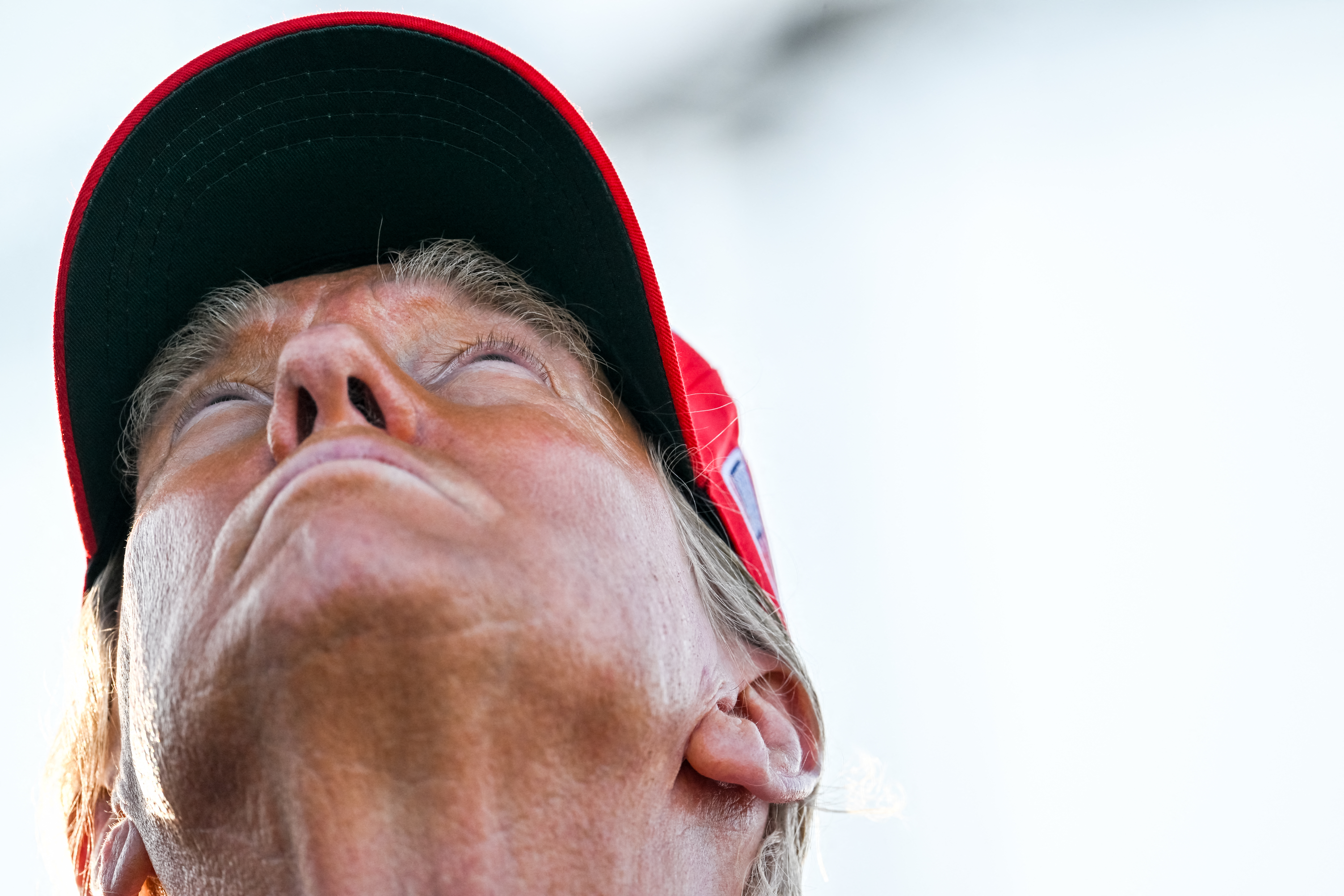
BROWNSVILLE, TEXAS – NOVEMBER 19: U.S. President-elect Donald Trump views the launch of the sixth test flight of the SpaceX Starship rocket on November 19, 2024 in Brownsville, Texas. SpaceX’s billionaire owner, Elon Musk, a Trump confidante, has been tapped to lead the new Department of Government Efficiency alongside former presidential candidate Vivek Ramaswamy. (Photo by Brandon Bell/Getty Images/AFP)
Washington, United States — US President-elect Donald Trump said Monday he intends to impose a 25 percent tariff on goods from Mexico and Canada, along with a 10 percent tariff on imports from China in response to the illegal drug trade and immigration.
In a series of posts to his Truth Social social media account, Trump vowed to hit some of the United States’ largest trading partners with sweeping tariffs on all goods entering the country.
Article continues after this advertisement“On January 20th, as one of my many first Executive Orders, I will sign all necessary documents to charge Mexico and Canada a 25 percent tariff on ALL products coming into the United States, and its ridiculous Open Borders,” he wrote.
FEATURED STORIES BUSINESS PH trade deficit seen worsening BUSINESS Transforming lives: The heart of SMDC’s 20-year journey BUSINESS BIZ BUZZ: Nico joins Erwan, Solenn for BetterBankingREAD: Most Asian markets drop, dollar gains as Trump fires tariff warning
In another post, Trump said he would also be slapping China with a 10 percent tariff, “above any additional Tariffs,” on all of its products entering the US in response to what he said was its failure to tackle fentanyl smuggling.
Article continues after this advertisementTariffs are a key part of Trump’s economic agenda, with the Republican president-elect vowing wide-ranging duties on allies and adversaries alike while he was on the campaign trail ahead of his November 5 victory.
Article continues after this advertisementTrump’s first term in the White House was marked by an aggressive and protectionist trade agenda that also targeted China, Mexico and Canada, as well as Europe.
Article continues after this advertisementWhile in the White House, Trump launched an all-out trade war with China, imposing significant tariffs on hundreds of billions of dollars of Chinese goods.
At the time he cited unfair trade practices, intellectual property theft, and the trade deficit as justifications.
Article continues after this advertisementREAD: Trump has vowed sweeping tariffs: What comes next?
China responded with retaliatory tariffs on American products, particularly affecting US farmers.
The US, Mexico and Canada are tied to a three-decade-old free trade agreement, now called the USMCA, that was renegotiated under Trump after he complained that the US businesses, especially automakers, were losing out.
“Mexico and Canada remain heavily dependent on the US market so their ability to walk away from President-elect Trump’s threats remains limited,” Wendy Cutler, vice president at the Asia Society Policy Institute, and former US trade official, told AFP.
By citing the fentanyl crisis and illegal immigration, Trump appeared to be citing national security concerns as a means to break that deal, something that is usually allowed under the rules set by the World Trade Organization or in trade deals.
But most countries and the WTO treat national security exceptions as something to be used sparingly, not as a routine tool of trade policy.
Trump in 2018 cited national security justifications to impose tariffs on steel and aluminum imports that targeted close allies like Canada, Mexico, and the European Union.
This led to retaliatory measures from the trading partners.
‘Bet on China tariffs’
Many economists have warned that tariffs would hurt growth and push up inflation, since they are primarily paid by importers bringing the goods into the US, who often pass those costs on to consumers.
But those in Trump’s inner circle have insisted that the tariffs are a useful bargaining chip for the US to push its trading partners to agree to more favorable terms, and to bring back manufacturing jobs from overseas.
Trump has said he will put his commerce secretary designate Howard Lutnick, a China hawk, in charge of trade policy.
Lutnick has expressed support for a tariff level of 60 percent on Chinese goods alongside a 10 percent tariff on all other imports.
William Reinsch, senior adviser at the Center for Strategic and International Studies, said that that move was classic Trump: “threaten, and then negotiate.”
“In terms of what might actually happen, I’d bet on some China tariffs going into effect. That’s legally easier and politically more palatable,’ he said.
Subscribe to our daily newsletter
“On Canada and Mexico there was going to be a renegotiation of their trade deal (the USMCA) anyway in 2026.”vvjl
READ NEXT Group asks BBM to break up NAIA cargo monopoly Customs: Collections from fuel marking program crosses P1 tril... EDITORS' PICK DOJ to summon Duterte over ‘active threat’ on President Disinformation networks exploit West Philippine Sea tensions for profit Holiday blues: Fil-Am widow thankful for programs that help ease sadness Marcos on VP rant: Don’t use ‘tokhang’ vs truth James Reid gears up for 2025 project with Dreamscape PH trade deficit seen worsening MOST READ Chito Miranda’s wife Neri Naig arrested by police — Ogie Diaz Disinformation networks exploit West Philippine Sea tensions for profit Indonesia digs out as flooding, landslide death toll hits 20 Marcos is running a ‘fractured government’ – VP Duterte Follow @FMangosingINQ on Twitter --> View comments

